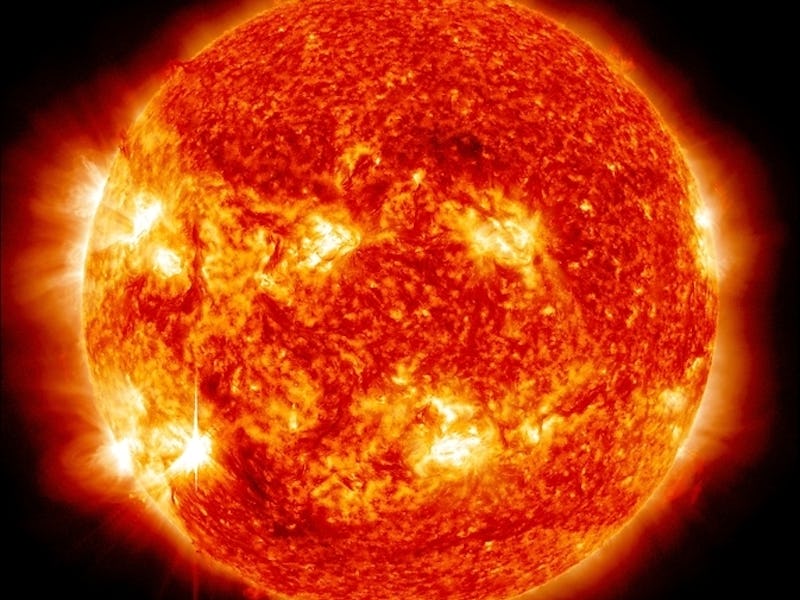NASA is Sending a Heavily Armored Machine Into the Sun
No machine has ever traveled this close to our scorching star

In the summer of 2018, NASA plans to send a spacecraft, the Solar Probe Plus, into a hellish, unforgiving place: the sun’s atmosphere, where temperatures will reach 2,500 degrees Fahrenheit.
To ensure that the machine doesn’t promptly cook to death, scientists at the Johns Hopkins University Applied Physics Lab attached a battering ram-like shield to the front of the machine, so it looks like it could pummel the gates of a medieval castle. The carbon-composite shield is eight feet in diameter and 4.5 inches thick.
Behind this robust space armor, in that large-hexagonal compartment, is the probe’s cooling system. It’s composed of a sophisticated system of radiators intended to cool the machine as it travels through an environment several times hotter than a pizza oven.
The Solar Probe Plus leaving Earth, bound for hotter climes.
The 1,500-pound research probe will come within 3.9 million miles of the sun’s scorching surface, which is seven times closer than any previous mission. Earlier efforts to study the sun, like the Solar Probe 2005, made one or two fleeting fly-bys of the sun, before retreating from the sun’s thermal climes. The Solar Probe Plus will orbit the sun for nearly seven years, at times traveling 450,000 miles per hour — at such a speed, you could get from Philadelphia to New York City in one second.
Inside the sun’s outer atmosphere — the corona — a variety of instruments will take direct measurements of the energetic particles (electrons, protons, and ions) zipping around. By understanding the flow of heat and energy in the corona, scientists hope to improve their understanding of the solar wind, a stream of charged particles that can slam into Earth, wreaking catastrophic damage on our electrical grids. NASA wants to be able to make solar forecasts, so we can prepare for a ruthless solar wind. Without warning, the National Academy of Sciences predicts that a massive solar wind event could paralyze the eastern seaboard, wiping out power for a year.
As you many have guessed, the Solar Probe Plus will be powered by the sun. At times when the probe’s orbit brings it out of the corona’s tormenting environs, the probe will deploy two solar panel flaps, raising them out like bird’s wings.
Tomorrow, NASA will announce the mission at 11 a.m. Eastern, live on NASA TV.
Artist rendering of the Solar Probe Plus getting terrifyingly close to the sun.